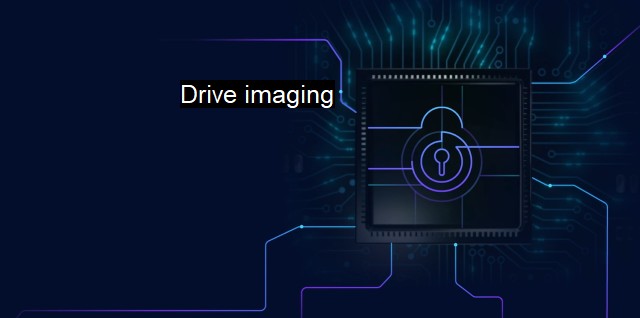What is Drive imaging?
Securing your Computer with Drive Imaging: Understanding the Essence of Drive Imaging in Cybersecurity and Antivirus Measures.
Drive imaging refers to the process of copying the entire contents of a computer's hard drive, including its files, folders, and system settings, and storing them in a single, compressible file known as an image. This image captures the content and the detailed structure of the storage medium, accurately reflecting its state at imaging time. Therefore, if an issue arises that affects the operation of the system such as a system crash, virus or malware infection, the image can then be used to restore the computer’s entire drive back to the exact state it was in at the time the image was created.Often, people confuse drive imaging with backups, but they serve different purposes in the cybersecurity paradigm. While both processes involve duplicating data for safe storage, a backup typically involves creating copies of individual files and folders for recovery purposes, whereas drive imaging captures the entire system state. This means that not only files and apps are copied, but also system settings, application configurations, and other nuances that make the system "yours." Having a system image could prove particularly useful if your system crashes or is rendered unusable due to a serious virus infection, you can restore it using that image – effectively returning your system to the exact state it was in when the image was created.
Drive imaging can be crucial for cybersecurity and antivirus action strategies because it helps spearhead preemptive measures against potential data loss. For instance, in the event of ransomware attacks, where hackers encrypt and hold data for ransom, having a recent image of your drive can mean just being able to restore your system without paying any ransom. You stand a chance against malware too. In case of virus infection, you could repave the entire system using a clean drive image instead of attempting to clean the system or having to reinstall the operating system and all applications manually.
In the cybersecurity sphere, two approaches to drive imaging are widely accepted: cold imaging and hot imaging. Cold imaging involves shutting off your computer beforehand to ensure a consistent, static imaging process, leaving zero chance for transient files or operations from messing up the image. Hot imaging, on the other hand, allows you to keep using your computer while the imaging process continues, causing little to no disruption in productivity.
As valuable drive imaging is it does have its limitations. A system image is not a real-time backup; therefore it does not capture any alterations to files or the system setup after the creation of the image. the restored files and folders assume the permissions and settings they had at the time of the image creation, which, in some cases, can lead to conflicts particularly if there have been significant system changes post imaging. This does not negate the protective role of drive imaging in cybersecurity but simply emphasizes the need for an all-encompassing cybersecurity strategy, where drive imaging forms one essential part complemented by regular backups, antivirus tools, firewall protection and alert user behavior.
Drive imaging serves as a practical tool in the cybersecurity and antivirus environment by offering a way to fully restore a computer’s hard drive, including system settings and software installations, after virus attacks or system failures. By accurately capturing the state of a computer at a specific point in time, drive imaging provides a powerful means of recovery, data preservation, and system restoration. This preventive recourse forms the basis of a well-rounded, resilient cybersecurity infrastructure.

Drive imaging FAQs
What is drive imaging in the context of cybersecurity?
Drive imaging is the process of creating an exact copy of a computer's hard drive, including all files, settings, and configurations. This is a crucial tool for cybersecurity and antivirus purposes, as it allows you to create a backup of your entire system in case of a cyber attack or malware infection.Why is drive imaging important for cybersecurity and antivirus protection?
Drive imaging is important for cybersecurity and antivirus protection because it allows you to quickly restore your system to a pre-attack state in case of a security breach. By creating a backup of your entire hard drive, you can ensure that all files and settings are preserved, making it easier to recover from any malware or ransomware attacks.How often should I perform a drive image backup?
It's recommended that you perform a drive image backup at least once a month, or more frequently if you frequently download or install new software. It's also a good idea to perform a backup before making any major changes to your system, such as installing a new operating system or upgrading hardware.What software can I use for drive imaging?
There are several software options for creating drive images, including popular programs like Norton Ghost, Acronis True Image, and Macrium Reflect. It's important to choose a reputable and trusted program to ensure that your backups are reliable and secure.| | A | | | B | | | C | | | D | | | E | | | F | | | G | | | H | | | I | | | J | | | K | | | L | | | M | |
| | N | | | O | | | P | | | Q | | | R | | | S | | | T | | | U | | | V | | | W | | | X | | | Y | | | Z | |
| | 1 | | | 2 | | | 3 | | | 4 | | | 7 | | | 8 | | |||||||